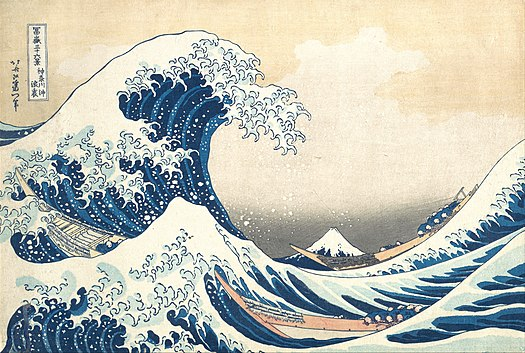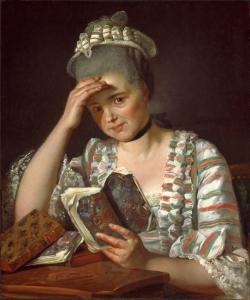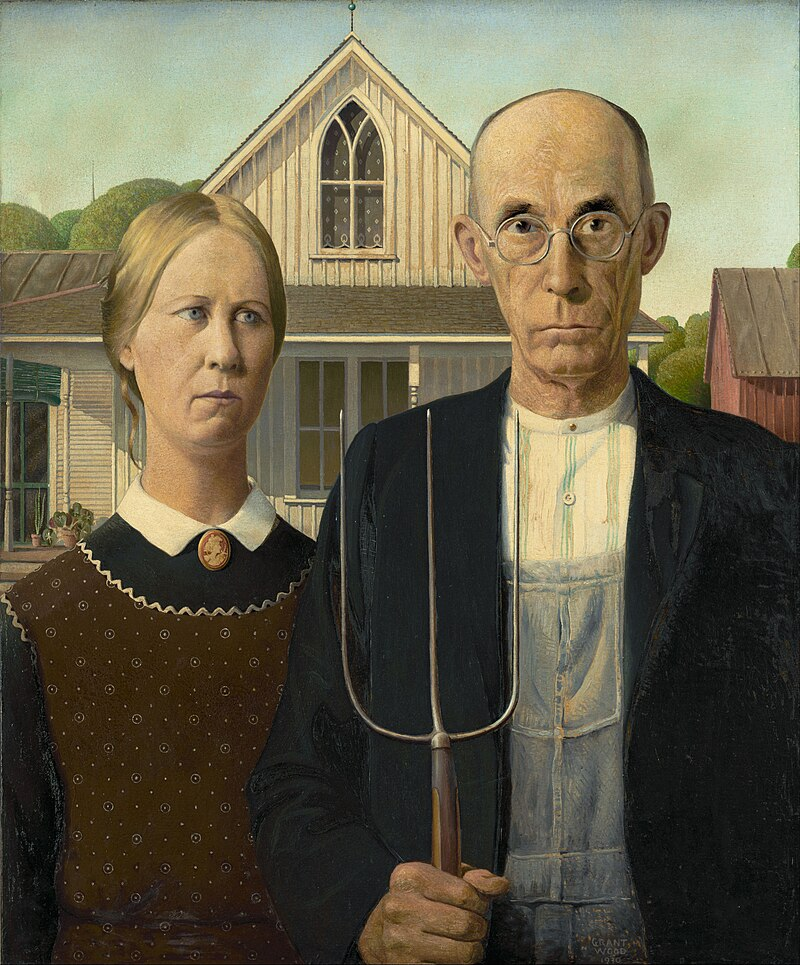Non Western Blog - Edo Period -Japan
The Edo period can be considered one of the richest time periods for Japanese arts. The term Edo refers to the city of Edo, which is now known as Tokyo during the time period of 16 to 1868. During this time period the Tokugawa Shogun ruled Japan from the urban style capital. Wide forms of art came from the Edo time period such as, screen paintings, scrolls, ceramics, textiles and woodblock prints.
The Great Wave off Kanagawa - 1831
The Great Wave off Kanagawa is a famous Japanese woodblock painting created by Katsushika Hokusai in the early 19th century. The wave print is apart of a series of other paintings called "Thirty-Six views of Mount Fuji" which shows the mountain from various different angles and views. The painting depicts a towering wave that is about to crash onto three small boats. I have always loved this painting and I have many different styles of it. The color and how sharp the waves, are some of my favorite features. I also love this painting for it shows you the unpredictability of nature, and that even with a clear sky there can be massive waves that come crashing down on you.
Japan, 1800–1900 A.D.: Chronology: Heilbrunn Timeline of art history: The Metropolitan Museum of Art. The Met's Heilbrunn Timeline of Art History. (n.d.). Retrieved April 30, 2023, from https://www.metmuseum.org/toah/ht/10/eaj.html
Japan, 1800–1900 A.D.: Chronology: Heilbrunn Timeline of art history: The Metropolitan Museum of Art. The Met's Heilbrunn Timeline of Art History. (n.d.). Retrieved April 30, 2023, from https://www.metmuseum.org/toah/ht/10/eaj.html
Wikimedia Foundation. (2023, April 6). Utamaro. Wikipedia. Retrieved April 30, 2023, from https://en.wikipedia.org/wiki/Utamaro





Hello Sydney,
ReplyDeleteI also really like the Great Wave off Kanagawa painting because of the story it seems to tell. The colors and the lines just bring it all together to make a beautiful masterpiece. The painting Two Women is interesting to me because I wonder why Utamaro chose to have one woman holding a letter while the other has a fan. An interesting fact I found about Utagawa Hiroshige is that he was paid very little for each series he did, yet he still continued on painting.
“Utagawa Hiroshige.” The Art Institute of Chicago, www.artic.edu/artists/34946/utagawa-hiroshige. Accessed 2 May 2023.
Sydney,
ReplyDeleteThese 3 Japanese paintings that you chose for your exhibit are extremely appealing. I found "The Great Wave of Kanagawa" painting to somewhat be my favorite from exhibit on Japanese art, since it reveals the different waves at different heights and creates realistic experience for observers to ponder about. But when you look at "Two Women", the images of the "Two Women" don't appear to as clear as the other two in your selected exhibit. Nevertheless, the differences between the paintings demonstrates the versatile styles that are a part of the Japanese world of art. How people are presented in Japanese art paintings like the ones above gives observers the desire to learn more about Japanese art and culture.
Abdurahman
I greatly enjoy all three of the paintings you picked for this blog, and found your commentary insightful and educational! The varying emotions and atmosphere of the pieces really helped display the wide range of art in the Edo Period. I especially like the inclusion of 'The Fisherwomen of Awabi', as I feel that culturally we often focus on either landscapes or portraits of men, while portraits of women only gain attention through a sexual lens. The mentioned piece does not follow this pattern, instead showing the two women as just people, which I really like.
ReplyDelete